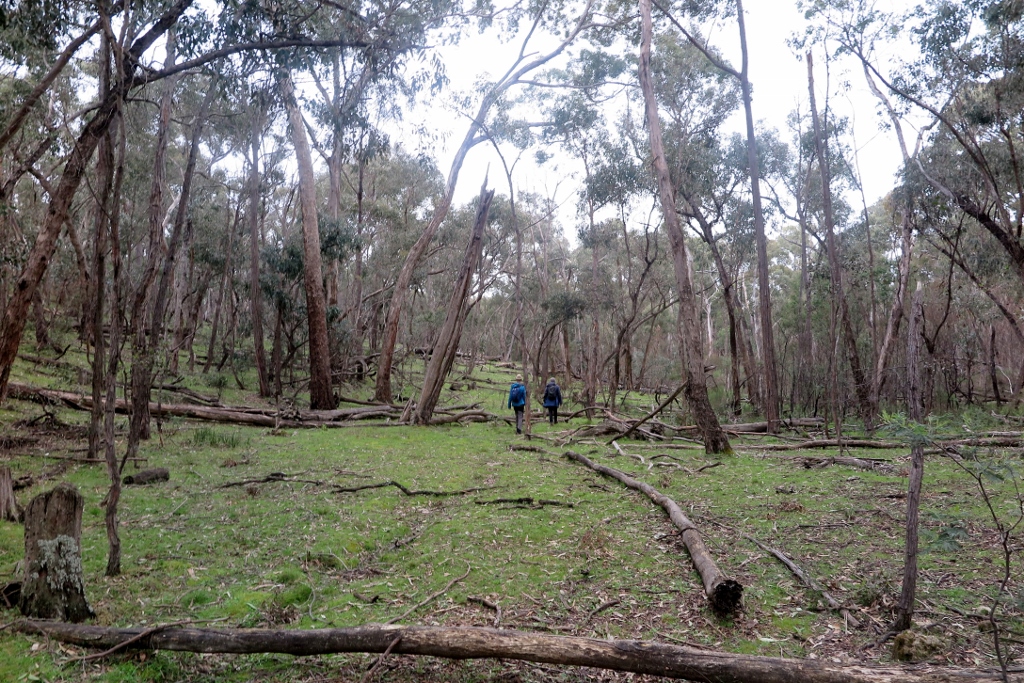Does fuel reduction burning work to reduce fire risk? For fire managers there is no debate. Their practice is governed by assessments of fuel load, and computer modelling of fire behaviour.
Managers concede one thing: that some burns are too hot, and may cause undue vegetation growth—that is, to increase fuel loads. They attribute these malfunctions to the difficulty of getting the right conditions for burning: and things do have to be right: temperature, wind, soil moisture… Factor in political pressure, especially from those who fervently believe that the only way we can be safe is to burn the bush black as often as possible, and the managers are in a challenging situation.

In the Fryers Nature Conservation Reserve: this area is slated for a fuel reduction burn. How will it look in a couple of years?
How can we make an informed judgment on the managers’ success? It’s hard, if not impossible, to get the managers’ internal post burn assessments—ie, their judgments on how much fuel had been reduced. Instead, we have assertions as to how this or that bushfire was brought under control after it had been impeded by a fuel reduced area. There were a lot of these at the Black Saturday Royal Commission.
But what about systematic assessments of the effects of fuel reduction? A rare example appeared on The Conversation website last week. Among other things, its authors claimed that in the NSW Black Summer fires, ‘Where prescribed burns had very recently been carried out, the bushfires were marginally less severe, about half of the time’. This is despite the fact that in the previous ten years the amount of forest ‘fuel reduced’ was the largest in the state’s history.
Further, the authors examine fire history in WA, and conclude that ‘Bushfires were three times less likely in old (ie, unburned) forests than they were in recent prescribed burns’. They argue that this is because forests left to themselves tend to thin out the flammable shrub layer; burning actually promotes growth of this layer.
So there are broadly two sides to the fire argument:
- Left to themselves, forests build up fuel to a dangerous extent.
- Left to themselves, forests tend to reduce dangerous fuels.
This is the nightmare world of ‘alternative facts.’ Only one side of the argument can be substantially true. But how do we sort out which one?
The problem is that these two sides of the argument never seem to communicate. We offer an example below.




 Click on image for info/order page
Click on image for info/order page Click on image for info/order page
Click on image for info/order page Click on image for info/order page
Click on image for info/order page





















Well it is simple really. Once government creates a department to burn as much public land as they can rationalise in the name of protecting communities then that is their only reason for being. and that is what they will do, and get paid for regardless of more science coming out on the misguided belief that this simplistic solution does nothing more than trash even further whole eco systems and in all probability encourage massive regrowth of woody flammable understory which means further burning in the future. thereby guaranteeing further funding and on it will go. The real irony is that down the corridor another dept is paying big money to private landowners to protect the same remnant vegetation.